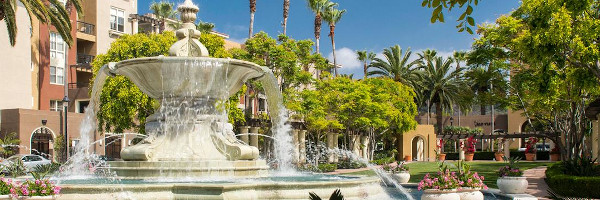Water Application Management
| Water Application Management | |
|---|---|

| |
 Water Management Fontana | |
| Team Organizations | Lucity ESRI |
| Team Leaders | Rogelio Matta |
| Participating Municipalities | Fontana CA |
| Status | Launched |
| Document | None |
Description
Watering the grass is one of those activities that is usually a “set it and forget it” process. But when you have 25 million square feet of landscape under irrigation, you can’t afford to waste a single drop. In our situation 1” of overwatering can cost as much as $40,000 a year. So we set out to create a computerized “smart system” that operates with very little human intervention and is active and available at all times. This system is able to give directions to the over 456 field controller locations and receive feedback to help calibrate the system only applying what is necessary to keep the plant material healthy and thriving. There are many horticultural aspects that go into keeping landscape healthy. Of these water is among the most critical. Knowing exactly how much water to use is impossible unless you have a way to measure output and monitor system performance. We created a method to do just that. This method is controlled from a central location and can be accessed on tablets in the field.
Challenges
Cities struggle to provide the best services at the lowest cost possible. In California we deal with high water costs and drought. So controlling the amount of water we use on parks and public common landscape areas is very important. Moreover, the parks and landscape areas of City of Fontana are made up of 83 individual zones called Special Landscape Districts that vary in size and are independent of each other so now expenditures can cross another district’s boundary. This make for a complex administrative process.
Solutions
Water = money. More than that, water is a limited resource. It is critical to only apply the amount of water necessary to each area to keep the landscape healthy. But because of the resources needed to insure success, practicing this concept is not as widespread as one might think. We wanted to create a system that required as few resources as possible but yet gave us the outcomes we were looking for. Of the 456 controller locations, 380 are located in 83 separate special landscape districts. The remaining 76 are located in General Fund areas. This means that each district requires independent budgets and monitoring.
Major Requirements
- Data Collection: We collected landscape and hard surfaces separately so we would know exactly how much area was under maintenance. We collected water meter information and irrigation controller locations.
- Created GIS: We then created a GIS map to visualize these areas and assets
- Created CMMS Database: We worked with our CMMS vendor Lucity to create a specific database to capture the data for analysis and reporting. Leveraged for water meter extents. We identified the water meter extents.
- Calibrated system: We used consumption information from our water suppliers to compare to our field data.
- Monitor performance: We monitor each location from a central location and from the web map designed specifically for monitoring purposes.
Performance Targets
| Key Performance Indicators (KPIs) | Measurement Methods |
|---|---|
|
We created a GIS web map to deliver complex performance information to end users in a simple understandable non-technical user interface using a GIS and database environment |
Standards, Replicability, Scalability, and Sustainability
- The success of this project is predicated on each component of the system working together using the same data. Once the baseline consumption targets are set, the system uses weather stations to determine the appropriate amount of water based on local weather conditions. Radio telemetry and internet connections send information to the field units. Using the same baseline information we are able to monitor and determine where we are over watering or where we are on target. We do this with 456 controller locations each of which can operate anywhere from 12 to 48 remote control valves that is upwards of 25,000 valves controlled from one location in our administrative building.
- This technology can be easily replicated. If you only have a few controllers a few calculations in a spreadsheet is all that’s needed. With 526 controllers and an almost equal amount of water meters, we worked with our CMMS vendor Lucity, to create a database module to automate data maintenance and contain and maintain the data. The scalability factor is practically unlimited. We work with the developers to insure the design of the irrigation system is as efficient as possible and that the equipment is compatible with our system.
Cybersecurity and Privacy
TBD
Impacts
This project saves money but also conserves a limited resource by reducing water consumption to an appropriate level.
Demonstration/Deployment
We will demonstrate how the system was developed, how it operates and what the next step are. Which include an internet version for consumption by the public.